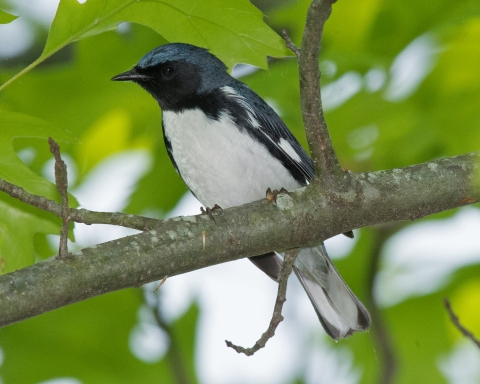Seasons of Wildlife
Occoquan Bay National Wildlife Refuge is a popular birding spot, especially because of its grassland-nesting and grassland-wintering birds, neo-tropical migrants, and raptors, many of whom are uncommon in the heavily developed Washington D.C./Northern Virginia region. The refuge has over 200 species of breeding, wintering, or migrating birds, and more than 20 species found using the adjacent river and bays. Grassland breeding birds arrive at the end of April to set up territories. Raptors migrate through the Refuge in April and May. Waves of migrating songbirds, especially warblers, vireos, thrushes, and flycatchers pass through in May and again in late summer and early fall. In October and November, and into the winter months, dabbling ducks are found in shallow habitats adjacent to refuge tidal marshes; diving ducks congregate in deeper waters adjacent to the refuge in Occoquan and Belmont Bays. Wintering loons, grebes, red-breasted mergansers, and diving ducks are found along the bay sides of the refuge.
The grassland/open-country breeding avian community at the refuge is dominated by the Eastern meadowlark (Sturnella magna), common yellowthroat (Geothlypis trichas), red-winged blackbird (Ageliaius phoeniceus), indigo bunting (Passerina cyanea), American goldfinch (Carduelis tristis), field sparrow (Spizella pusilla), and yellow warbler (Denroica petechia). The most frequently observed birds migrating through the refuge in the spring, based upon four years of mist netting along the Marumsco Creek, were the yellow-rumped warbler (Dendroica coronta), white-throated sparrow (Zonotrichia albicollis), and the gray catbird (Dumetella carolinensis).
Six species of birds are listed as tier II – very high conservation need in the Commonwealth of Virginia wildlife action plan. They are King rail, least tern, little blue heron, yellow-crowned night heron, bald eagle, and American black duck.





